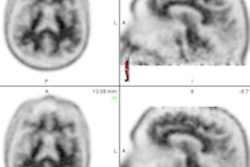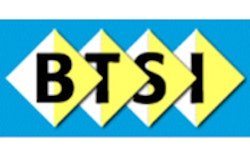Reversing a five-year decline, sales of PET scanners rose in 2010 in the U.S., although the modality continued to struggle internationally. Better things are on the horizon, however, as worldwide PET sales are expected to hit $1.7 billion by 2018, according to a new market research report.
The study, authored by Marvin Burns, president of Bio-Tech Systems, found that total U.S. sales volume of new PET systems, refurbished units, and PET/MRI scanners increased by 22% to $284 million in 2010, compared with $232.2 million in 2009.
According to Bio-Tech Systems' historical data, total sales volume in the U.S. cratered at $232.2 million in 2009, which is less than half of the total sales volume of $492.7 million in 2005.
The slump, however, may still linger a tad longer in the international arena. Worldwide total sales volume showed a third consecutive year of decline in 2010, slipping 5% to $439.7 million, compared with $464.3 million in 2009. Global total sales volume peaked at $553.9 million in 2007.
But things should start looking up soon, the report predicts. Manufacturers took orders for 178 PET systems in the U.S. in 2010, while international orders totaled 260 systems in 2010, as uncertainties over reimbursement and excess capacity seemed less of an issue than in previous years.
Projected U.S. sales volume: new, refurbished PET scanners
|
||||||||||||||||||||||||||||||||||||||||||||||||
| Dollar amounts in million. Source: Bio-Tech Systems. |
In addition, positive market response to new PET/MRI systems, expanded opportunities in time-of-flight (TOF) imaging, and more choices among lower-priced systems with higher-end imaging capabilities are expected to fuel growth and additional expansion in this decade.
"Based on these observations, both U.S. and international sales will grow at 12% to 14% per year over the next several years, with international sales running at about 60% of the total," the study noted. "Worldwide sales of PET scanners will increase from about $724 million in 2010 to $1.74 billion by 2018."
Projected international sales volume: new, refurbished PET scanners
|
||||||||||||||||||||||||||||||||||||||||||||||||
| Dollar amounts in million. Source: Bio-Tech Systems. |
The Bio-Tech Systems forecast is also optimistic for future sales of FDG, which increased 9% to approximately $300 million in 2010. With the introduction of new products as the catalyst, worldwide FDG sales could advance to $825 million by 2018, with PET radiopharmaceutical sales climbing to $4.1 billion by 2018.
The projection for worldwide PET radiopharmaceutical sales mirrors anticipated growth expressed in Bio-Tech Systems' June 2011 market forecast.
Of that $4.1 billion total, $3.1 billion is expected to come from sales of new products across a spectrum of applications in cardiology, neurology, and oncology. Demand for rubidium-82 PET for cardiology, for example, is expected to show growth and supplement new PET cardiology agents for perfusion imaging that are pending regulatory clearance.
"As new products enter the mainstream, it will stimulate growth of procedure volume and encourage more users to pursue sophisticated imaging applications," Burns' study concluded. "This will improve PET's prospects and help accelerate future growth."
The number of PET procedures being performed also gained momentum in 2010, with a 9% hike to 2.1 million and growth continuing in 2011. The report cited physicians' increasing confidence in PET's capabilities in diagnosis, staging, and management of disease, and healthcare providers' adjustment to the reimbursement requirements of Medicare and insurance carriers.
"This allowed PET to be used more effectively, with average procedure volume increasing and scanner utilization improving," the report stated.



















